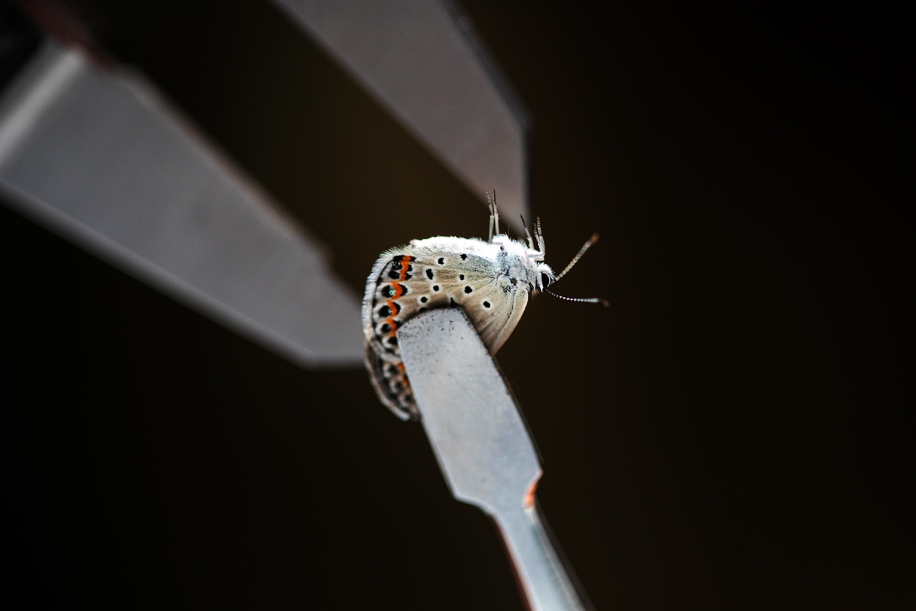
Karner Blue
Lauren Owens Lambert | United States
Photographer: Lauren Owens Lambert
Exhibit Title: Karner Blue
Location: United States
The endangered Karner blue butterfly was once spotted in 12 states is now only documented in five. These butterflies have specific habitat requirements and are closely linked to the presence of the endangered sundial lupine, which is the sole food source for the caterpillars. Lupines thrive in fire-dependent habitats. Unfortunately, these environments are degraded due to development, agriculture, fire suppression, and invasive species. To protect the butterfly, land managers utilize prescribed burning. In New Hampshire, an innovative captive-rearing program takes place inside old military barracks at the Army National Guard base in Concord. Currently, there is a thriving population of Karner blue butterflies here. This is the only state that exports the chrysalis of the rare butterfly to New York, which helps introduce new genetic lines at the Albany Pine Bush Reserve, the largest and last remaining inland examples of oak-pine barren ecosystem in the United States. The genetic health of the flower is also important. Cooper Kimball Rhines, a PhD student, is researching the genetic diversity and history of native lupine in New England to identify sources for new seeds that can support ongoing restoration efforts.
Make Comment/View Comments